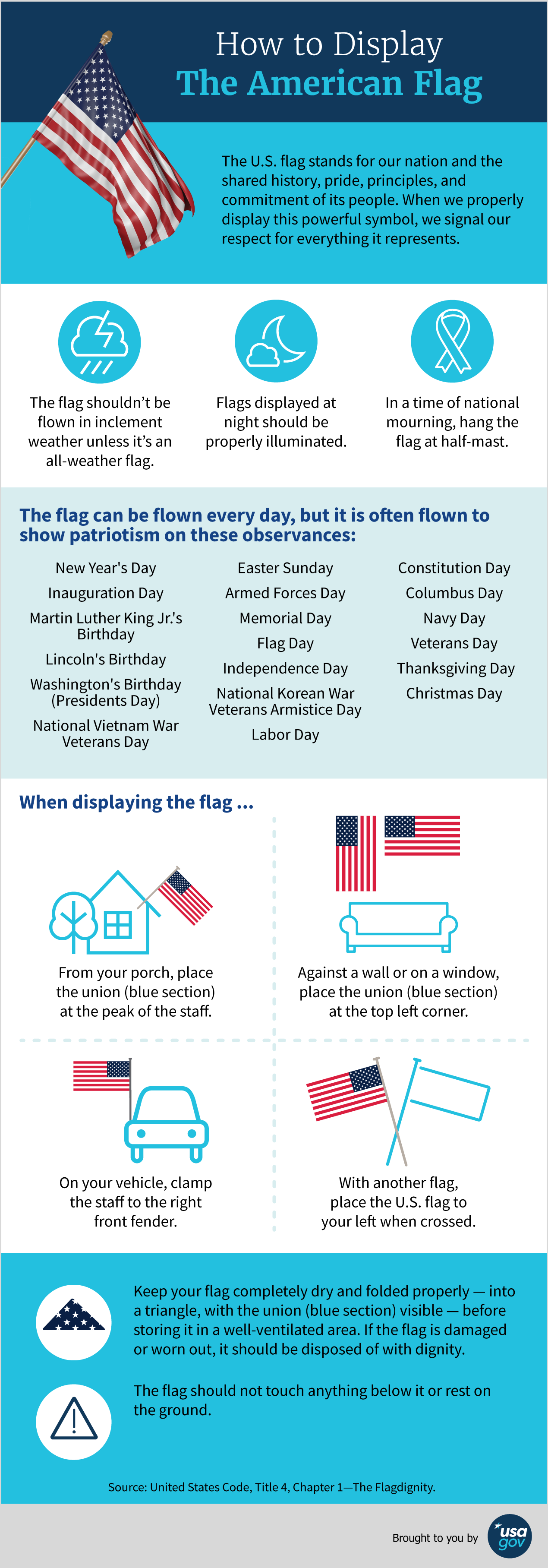Infographic: How to Display the American Flag
Learn when and how to display the American flag properly.

-
The U.S. flag stands for our nation and the shared history, pride, principles, and commitment of its people. When we properly display this powerful symbol, we signal our respect for everything it represents.
The flag shouldn't be flown in inclement weather unless it’s an all-weather flag.
Flags displayed at night should be properly illuminated.
In a time of national mourning, hang the flag at half-mast.
The flag can be flown every day, but it is often flown to show patriotism on these observances:
New Year's Day
Inauguration Day
Martin Luther King Jr.'s Birthday
Lincoln's Birthday
Washington's Birthday (Presidents Day)
National Vietnam War Veterans Day
Easter Sunday
Armed Forces Day
Memorial Day
Flag Day
Independence Day
National Korean War Veterans Armistice Day
Labor Day
Constitution Day
Columbus Day
Navy Day
Veterans Day
Thanksgiving Day
Christmas Day
When displaying the flag…
From your porch, place the union (blue section) at the peak of the staff.
Against a wall or on a window, place the union (blue section) at the top left corner.
On your vehicle, clamp the staff to the right front fender.
With another flag, place the U.S. flag to your left when crossed.
Keep your flag completely dry and folded properly — into a triangle, with the union (blue section) visible — before storing it in a well-ventilated area. If the flag is damaged or worn out, it should be disposed of with dignity.
The flag should not touch anything below it or rest on the ground.
Source: United States Code, Title 4, Chapter 1–The Flag
Brought to you by USA.gov
